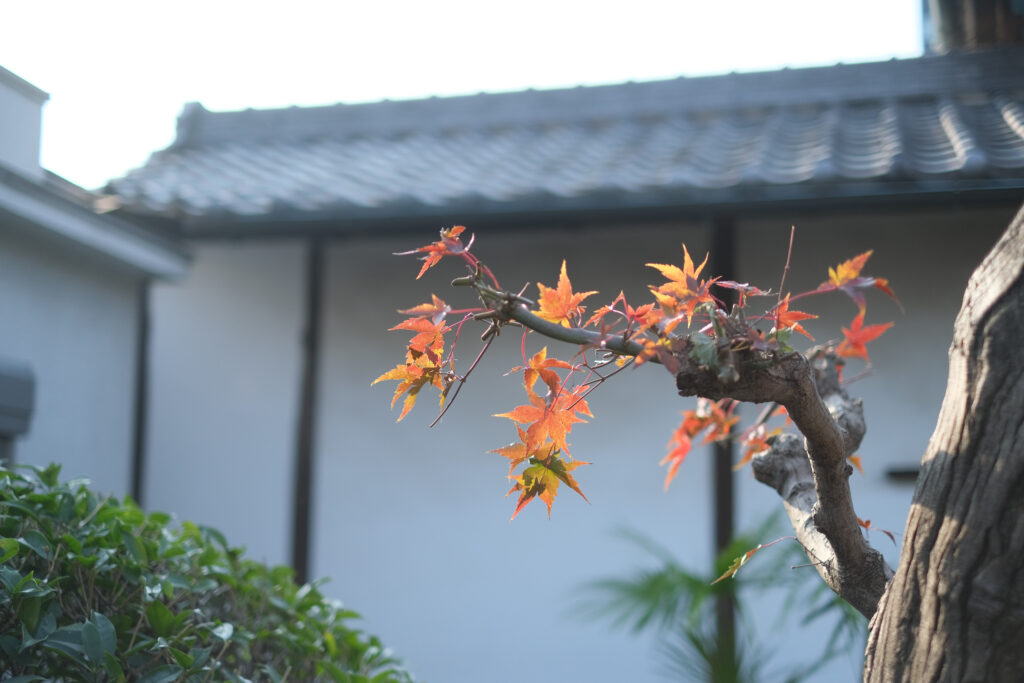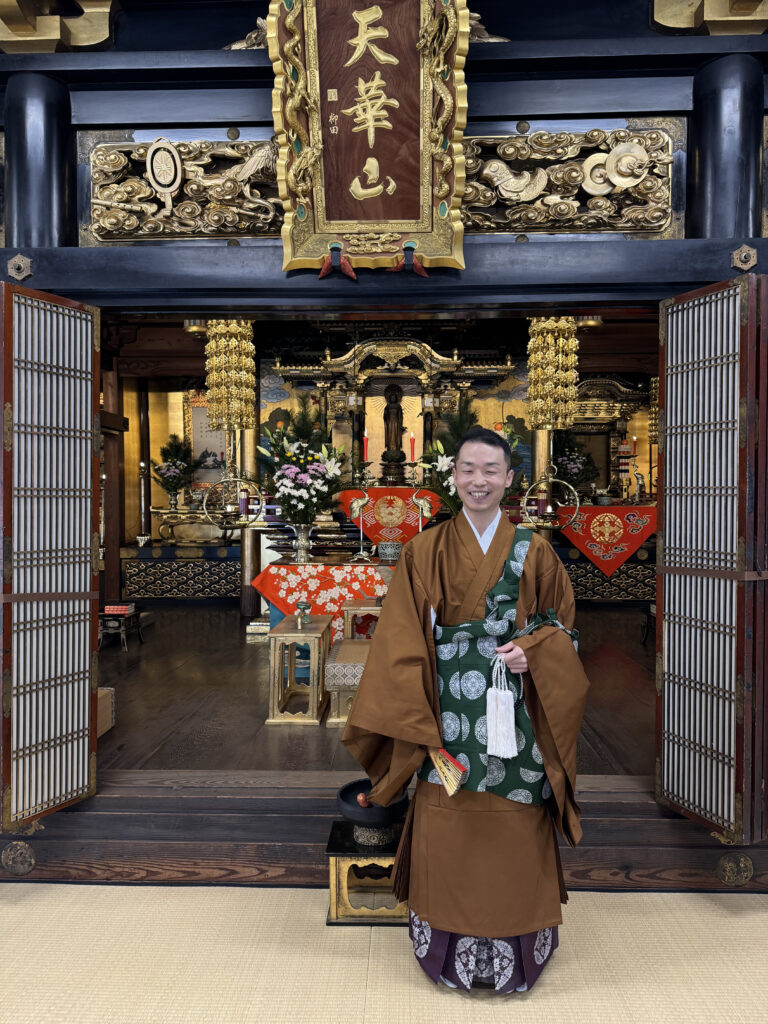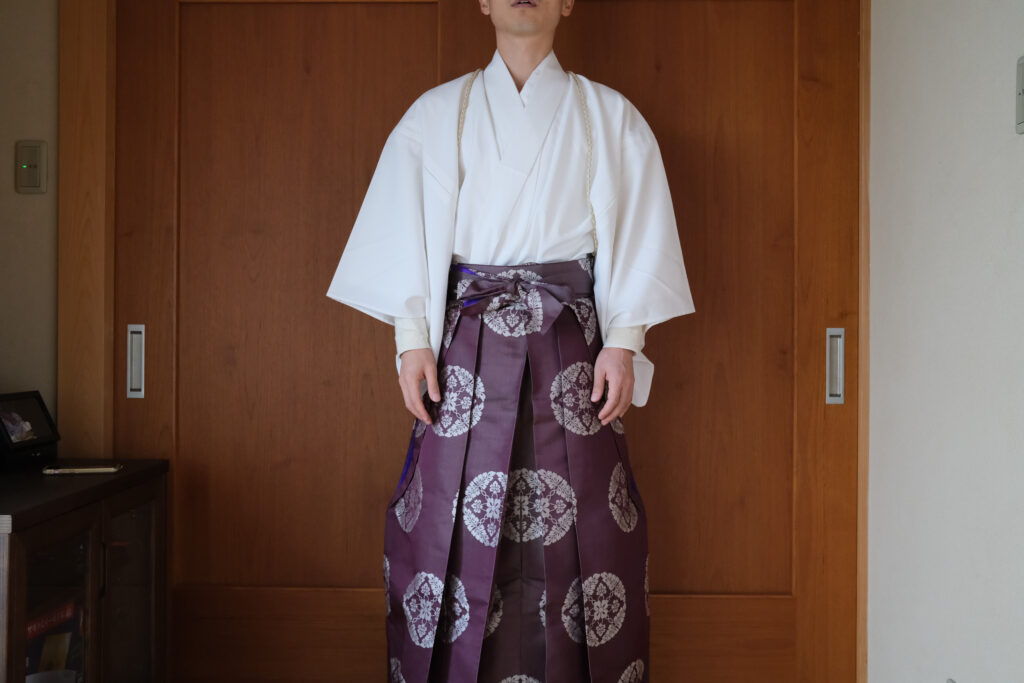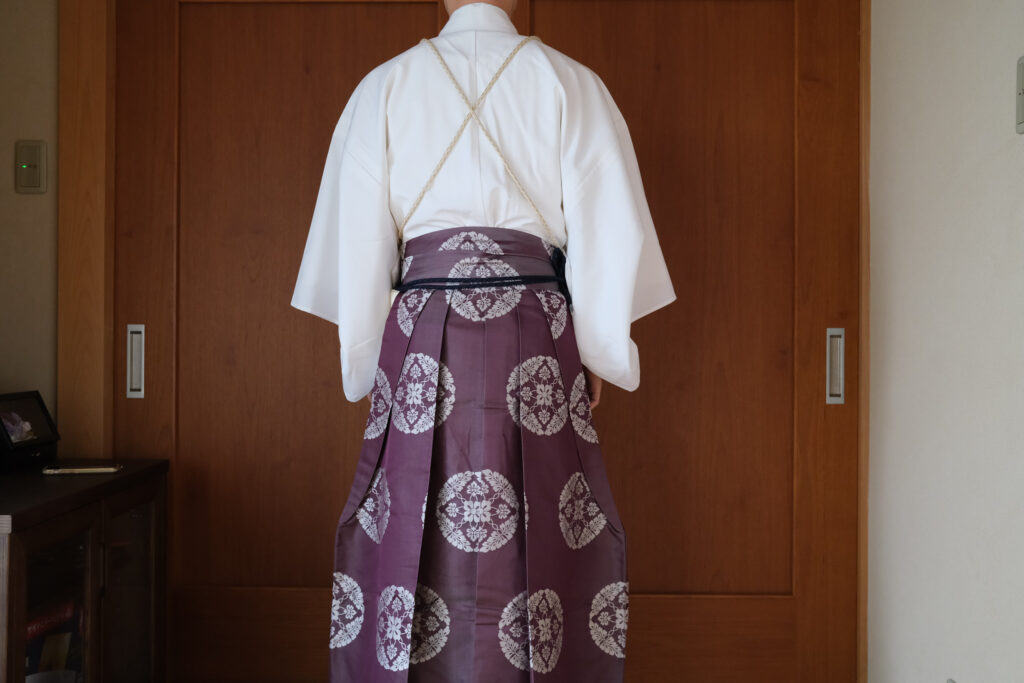
長らく疑問だった着物のデザイン・着方について、発見がありました。
身体の機能・仕組みとのつながりもふまえ。
この二日間、報恩講という浄土真宗で大切にされる行事が勤まりました。
年に一度のこの儀式では袴を着用する。
普段着物の帯は骨盤にかかる高さで締めていて、骨盤帯の安定(結果として股関節の自由さや体幹部の安定)を感じられる。
しかし袴は丈が長い。骨盤の高さで締めると裾を踏んでしまう。一方高くして下部肋骨が締まると呼吸が窮屈で。お腹もあまり圧迫したくない。
どの高さがいいのだろう。お寺に入って10年以上、疑問でした。
「腹横筋と一緒にはたらいてくれるように、お腹の周りに丁度よい塩梅で締める」
ふと思いついて、トライ。僕の場合は写真のような高さになります。
(*腹横筋(ふくおうきん)はお腹の筋肉の一番深いところにあって、背中からお腹の前側へ取り囲むようについている筋肉。繊維は水平方向に走っている。つまり帯の方向と一緒。)
浮遊肋骨とも呼ばれる11、12番肋骨にかからない高さで、お腹のまわりに、サポートを感じられるぎりぎりの加減で締める。
するとまさに腹横筋のはたらきと同様、腰椎や内臓がサポートを得られ中心軸も立ち上がってくる。
ロルフィングでプリバーテブラ(Pre-vertebrae)と呼ばれるエリアで、背骨の前側にある機能的感覚的なスペース。
帯のようにしっかりした構造だから感じられるサポート感で、ゴムでは決して得られないと思います。
これ結構いいかも!な今日の気づき。
ひもトレも活用しながら多くのお寺さんと一緒にお勤めし、良い響きを感じられた二日間でした。(収穫も課題もあり、学びは続きます。)
報恩講二日目も無事円成。明日から通常運転に戻ります。
(最下部にバランストレーナー小関勲さんから頂いたコメントを追記しています。)



恩師のパオラ先生から英語で読みたいとリクエストをもらいました。以下に英訳を載せます。
—English——
I began to see hints how the kimono (Hakama) is designed and how to wear it, which I had been questioning for a long time. (Also, its link with the function and the structure of the body.)
On these two days, an important ceremony called “Houonkou” was held.
During this once-a-year ceremony, we monks wear “Hakama”, which is purple one below the white kimono.
(Hakama is what you see beneath the brown robe in yesterday’s photo.)
I usually tighten my kimono Obi(=belt or sash, which you can’t see in this post’s photo) at the height where it rests on my pelvis (actually between the greater trochanter and iliac crest), and I can feel it gives kind of stability for the pelvic girdle (→ resulting in freedom of the hip joints and stability of the torso).
However, Hakama is long. If I tighten it at the height of the pelvis, I will step on the hem.
On the other hand, if I make it higher and tighten the lower ribs, breathing will be constricted. And I don’t want to put too much pressure on the belly by bringing it bit lower.
Which height and tension is better? A question I have had for over 10 years since I began working at the temple.
An idea comes;
The Obi of the Hakama is tightened around the belly in the “suitable” tension so that it works with the transversus abdominis muscles.
It suddenly came up to me, and I gave it a try. In my case, the height in the photo felt good.
(*The transversus abdominis muscle is the deepest muscle in the abdominal muscles and surrounds form the back to the front of the abdomen. The fibers run horizontally. That is, it runs in the same direction as the hakama obi.)
I tighten the obi around the belly at a height that does not interfere with the motion of the 11th and 12th ribs, with just suitable tightness (tension) at the level where I can feel support for the belly.
Then, just as the transversus abdominis muscle works, the lumbar spine and internal organs gain support and the felt central axis emerges.
(That is the area that Rolfers call the prevertebral space. The space on the anterior side of the spine.)
It is a sense of support that can be felt because of its solid fiber and weave structure of Obi, and perhaps can never be gained with rubber band.
This could be pretty good! That’s what I realized today.
(The knots are still rough, and I’d like to learn how to tie them nicely.)
The second (last) day of the “Houonkou” has been successfully completed, and I will gradually get back normal daily operations from tomorrow.
And there was a comment which resonates to me.
“When we stat to see (experience) the “real” body, it becomes clear what kind of abilities were drawn out by clothing and costumes (work clothes). And when the subject-object relationship becomes clear, the samadhi state is brought about which tells the fact (felt sence) that there is no subject-object relationship.”
By Isao Koseki, balance trainer, Himo-tore inventor and teacher of Chinese martial arts “HanShiYiQuan”
追記:
この記事について小関勲さん(バランストレーナー・ひもトレ考案者)からFacebookで頂いたコメントが膝を打ちたくなるほど的を射ていて共感するものでした。ご指摘のポイントは今年6月のひもトレ×イールドワークのワークショップにて、小関さんのはたらきかけの真髄として私が感じていたことでもあります。
ここに引用させて頂きます。